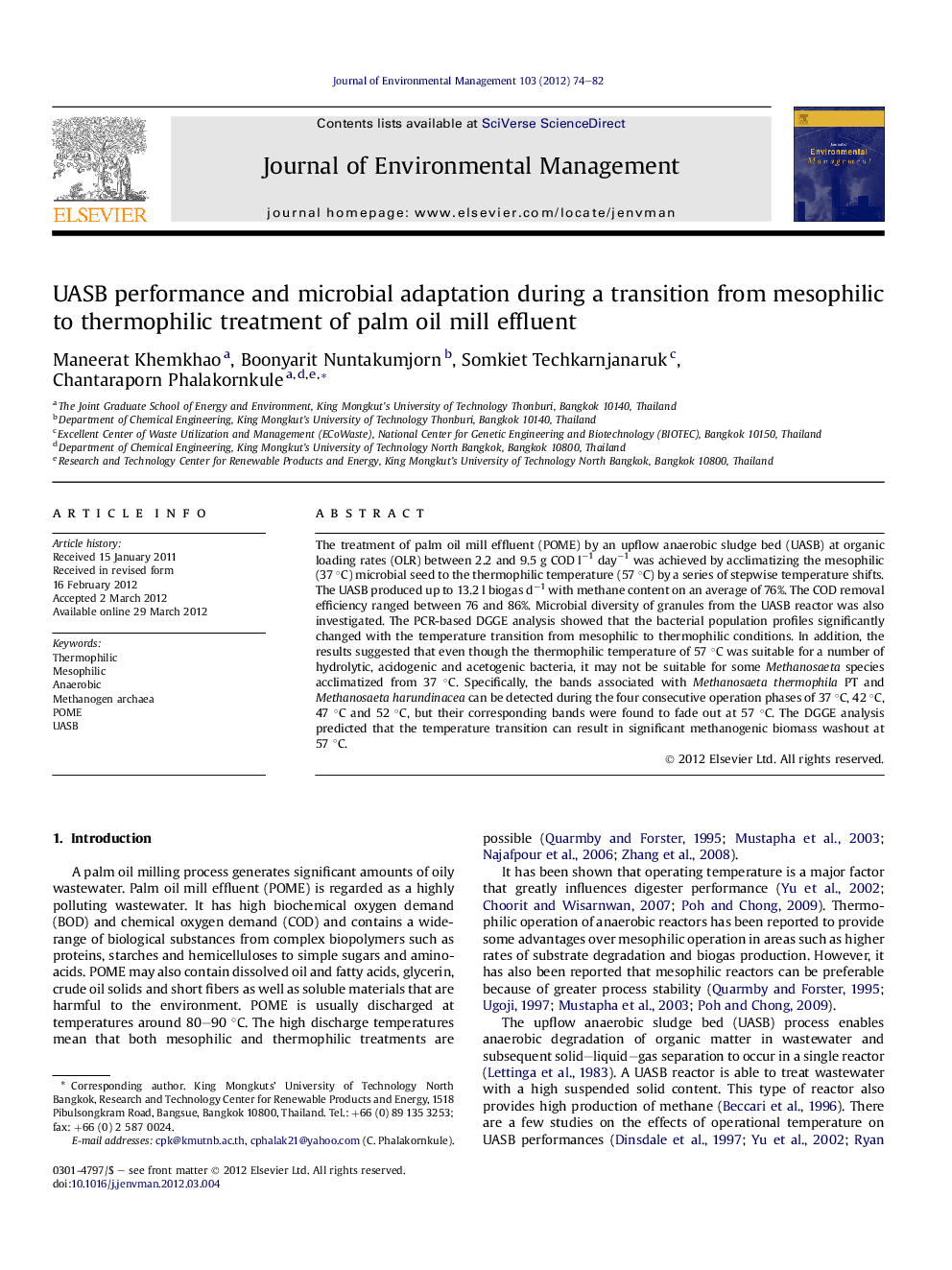| کد مقاله | کد نشریه | سال انتشار | مقاله انگلیسی | نسخه تمام متن |
|---|---|---|---|---|
| 1056644 | 1485309 | 2012 | 9 صفحه PDF | دانلود رایگان |

The treatment of palm oil mill effluent (POME) by an upflow anaerobic sludge bed (UASB) at organic loading rates (OLR) between 2.2 and 9.5 g COD l−1 day−1 was achieved by acclimatizing the mesophilic (37 °C) microbial seed to the thermophilic temperature (57 °C) by a series of stepwise temperature shifts. The UASB produced up to 13.2 l biogas d−1 with methane content on an average of 76%. The COD removal efficiency ranged between 76 and 86%. Microbial diversity of granules from the UASB reactor was also investigated. The PCR-based DGGE analysis showed that the bacterial population profiles significantly changed with the temperature transition from mesophilic to thermophilic conditions. In addition, the results suggested that even though the thermophilic temperature of 57 °C was suitable for a number of hydrolytic, acidogenic and acetogenic bacteria, it may not be suitable for some Methanosaeta species acclimatized from 37 °C. Specifically, the bands associated with Methanosaeta thermophila PT and Methanosaeta harundinacea can be detected during the four consecutive operation phases of 37 °C, 42 °C, 47 °C and 52 °C, but their corresponding bands were found to fade out at 57 °C. The DGGE analysis predicted that the temperature transition can result in significant methanogenic biomass washout at 57 °C.
► Palm oil mill effluent was treated by a UASB at OLR between 2.2 and 9.5 g COD l−1 day−1.
► The UASB produced 13.2 l biogas d−1 with the COD removal between 76 and 86%.
► The diversification of acidogenens and acetogenens was highest at 57 °C.
► Methanosaeta thermophila PT and Methanosaeta harundinacea were not the predominant types at 57 °C.
Journal: Journal of Environmental Management - Volume 103, 30 July 2012, Pages 74–82